The Complete Guide to eCommerce Subscriptions
- The subscription based business model: What is it and is it right for you?
- Introduction: The rise of eCommerce subscriptions
- The eCommerce subscription model: Understanding its 3 types
- 5 Benefits of subscription services
- 9 Crucial subscription eCommerce platform capabilities
- Your guide to the essential subscription integrations and apps
- How to start a subscription business in 6 steps
- 5 Subscription model best practices
- Take the effort out of subscriptions with Ordergroove
Customer Stories
The eCommerce subscription model: Understanding its 3 types
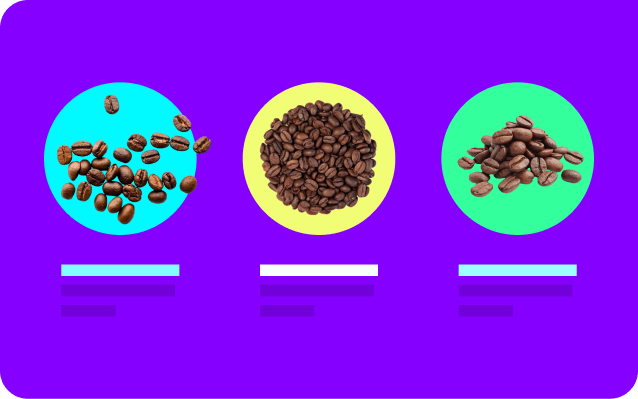
If you’re running late for work, the last thing you want to is to realize you’re out of coffee. Peet’s saw an opportunity.
They began offering an eCommerce subscription model that automatically shipped coffee according to a frequency set by the consumer. No longer would stressed workers have to waste time waiting in line at a coffee shop.
Needless to say, coffee-lovers aren’t the only ones who can benefit from these handy subscription options. Plenty of other businesses — and consumers — have jumped on board as well. Subscription eCommerce has taken off in multiple industries, with 2028’s global value projected to hit $2.6 trillion. That’s up from $35 billion in 2020, according to UnivDatos Market Insights.
The subscription model involving coffee is known as a “subscribe and save” model, and it joins curation and membership as a type of subscription offering brands can consider.
Choosing a successful subscription offering for your business means choosing the right strategy to go with it. Your strategy can take many forms, but, at its core, it should be giving your subscriber base as much control over their subscriptions as possible.
Subscribe and save
Subscribe and save — also known as a replenishment subscription or auto-shipping — provides regular, recurring delivery of a product to consumers. Many companies will offer the products to subscribers at a discount, incentivizing them to keep their subscriptions.
Natural skincare provider Tata Harper entices new subscribers with 15% off their first order, 20% off recurring orders, in addition to free shipping and the occasional gift.
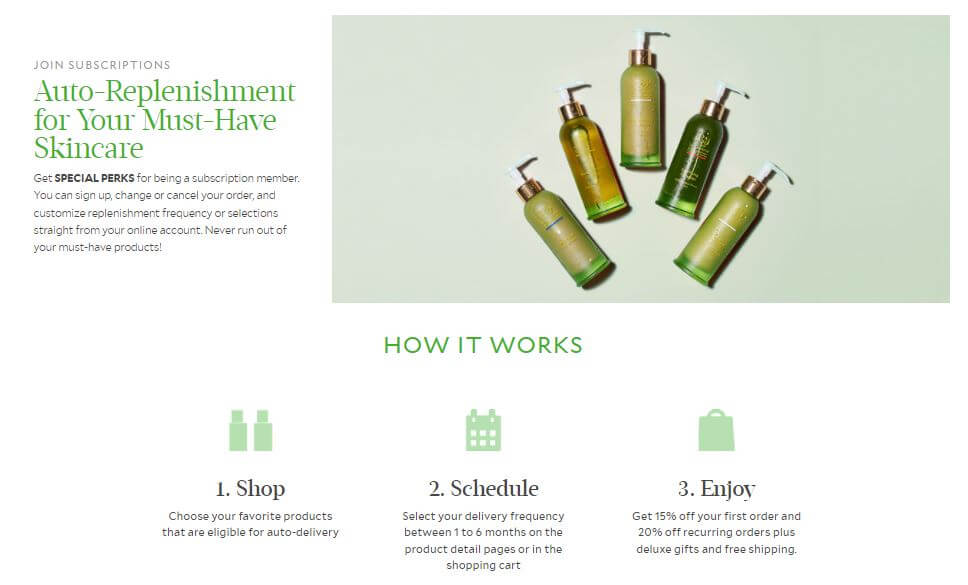
Frequently consumed products, such as razors, makeup, and, yes, coffee, are good fits for this model.
Benefits
If you have an established eCommerce business and want to jump into subscriptions, subscribe and save has much to offer.
High conversion rate. Compared to the membership and curation subscription offerings, subscribe and save has the highest conversion rate. The reason? Customers know they have a regular need for the product, so it’s a natural fit. According to McKinsey, 65% of consumers who consider subscribe and save end up joining.
High customer retention rate. Because of this regular need, subscribe and save customers tend to stick around longer. McKinsey also reports that 45% of subscribe and save members keep their subscription for at least one year, about 10% higher than curation or membership.
Less operational complexity. Subscribe and save is easier to launch than other subscription types. With subscribe and save, you’re selling products you already have, meaning orders should be easier to fulfill. Also, you’ll never have to hunt down new products, the same way you will need to with a curated subscription experience.
Challenges
Because of the benefits highlighted above, many companies have adopted this type of subscription experience, creating stiff competition.
For instance, the odds are stacked against you if you want to launch a new subscribe and save diaper subscription. You’ll need to either clearly differentiate your diapers from the big players such as Pampers or increase your value proposition by offering a deeper discount. One idea is to create a series of educational videos for new parents that only subscribers can access.
How to succeed
A subscribe and save experience succeeds when you make it extremely easy to sign up throughout the buying journey. Promote its value on your homepage, category pages, product detail pages, and even in the shopping cart.
Say a customer is about to add a brand of dog treats to their shopping cart. They notice a subscribe and save offer right below the “Add to Cart” button and learn immediately how much they’ll save on each purchase.
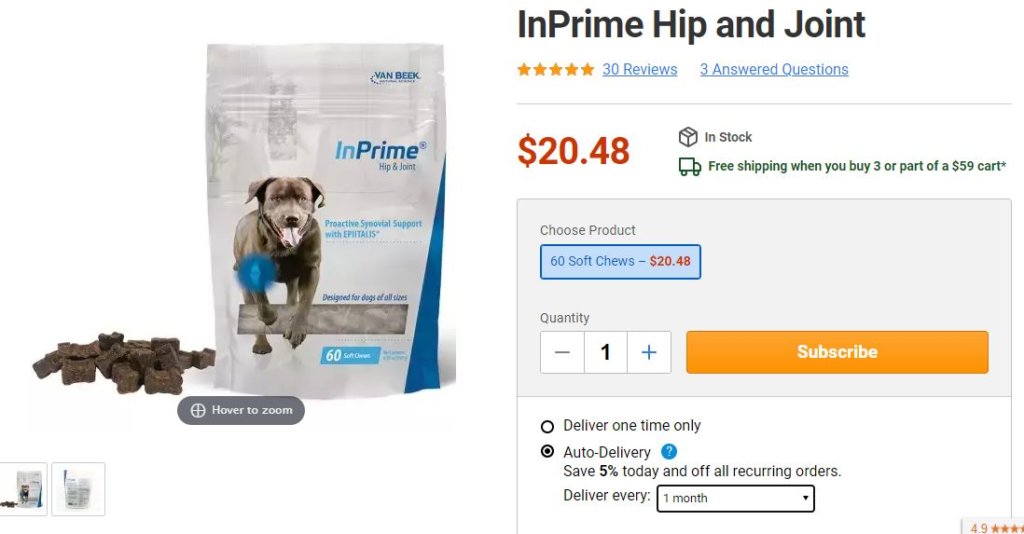
If the new subscriber receives a shipment every month, give them the ability to extend it to two with as few clicks as possible. It also shouldn’t be difficult for them to add non-subscription items to upcoming subscription orders.
Online pet pharmacy VetRxDirect made it possible for their replenishment subscribers to add one-off items such as shampoo and collars and found that 34% of them did so.
Curation
Curation, also known as a “subscription box” experience, varies the products in each shipment. For instance, if you have a curated subscription experience from a coffee brand, you’d receive a different flavor each month.
Curation seeks to delight consumers by appealing to their sense of curiosity and anticipation. Claire’s is an excellent example. The brand offers a variety of subscriptions boxes containing age-appropriate makeup and jewelry.
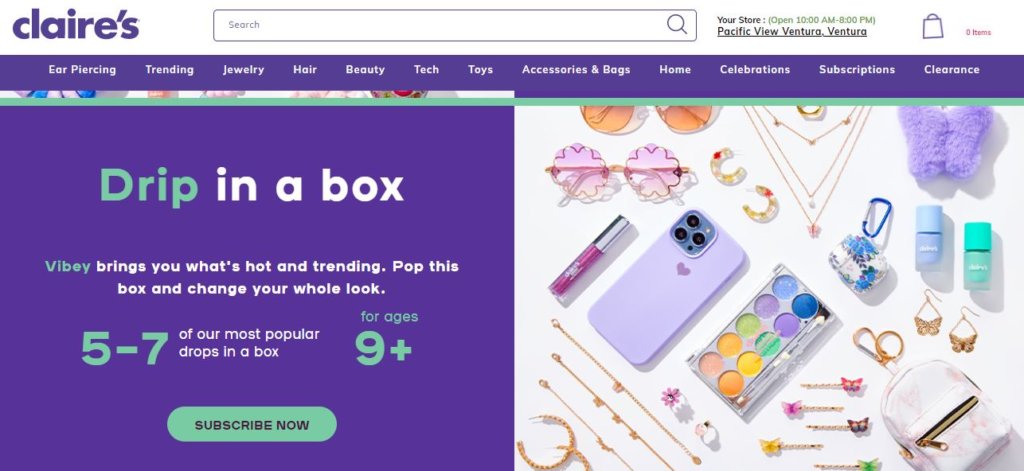
Claire’s makes it easy for online shoppers to switch from one box to another as their kids get older. They charge the same price for each box in the hope that subscribers stick around longer.
Benefits
When done right, curation subscriptions can be extremely lucrative. A common practice is to offer multiple boxes at tiered pricing. As the price goes up, so does the value.
Tiered subscription plans let companies cast a wider net, appealing to consumers with different income levels or varying needs and wants. It also makes upselling easier — a subscriber joins at a lower tier, loves the product, and perhaps adds other products to their next box. Then they switch to a more expensive tier.
Challenges
Because curation involves more than sending out the same product at set times, it’s a more labor-intensive model for the merchant to adopt.
Operational complexity. It can take a bit more time to create an intuitive front-end experience for the curation subscriber. If you want subscribers to build their own boxes, or ask them questions so you can assemble ones they’ll love, you’ll want to make sure those experiences are frictionless.
A frictionless curation experience is only half the battle. Curation also requires that you consider your subscribers’ unboxing experience. If you sell a $200 subscription box, the box itself, the tissue, and any branding collateral you include must look the part.
High churn rate. Curiosity sustains curation. McKinsey reports that 35% of subscribers stick with their subscriptions because of a “good variety of items or experiences.” Unless you can find ways to sustain that curiosity with a steady stream of innovative products or value-adds, the customer may get bored and churn.
How to succeed
eCommerce subscription models succeed or fail based on their ability to offer a personalized customer experience. McKinsey found that personalization generates 40% more revenue for companies who excel at it compared to companies who do an average job. Personalization is especially important with curation, thanks to its high churn rate.
One of the best ways to personalize the curation experience is to allow subscribers to customize boxes with their desired products. Many companies will curate boxes themselves, but this requires higher levels of customer trust. Personal styling service Stitch Fix has customers fill out style questionnaires before boxes ship, giving them more confidence that they’ll like what’s inside.
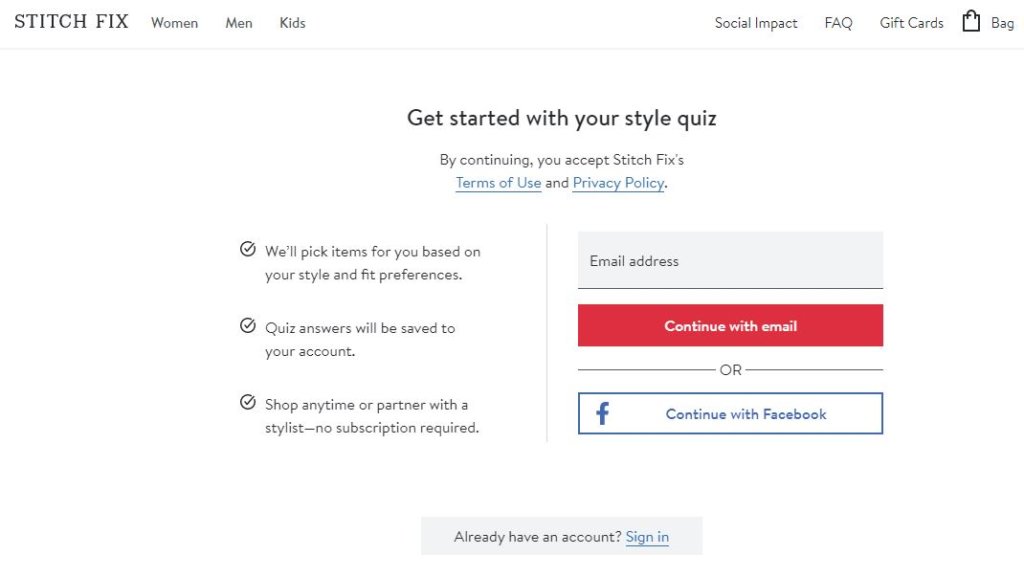
KIND Snacks does both. They give customers the option of customizing a box, but they’ll also curate it themselves.
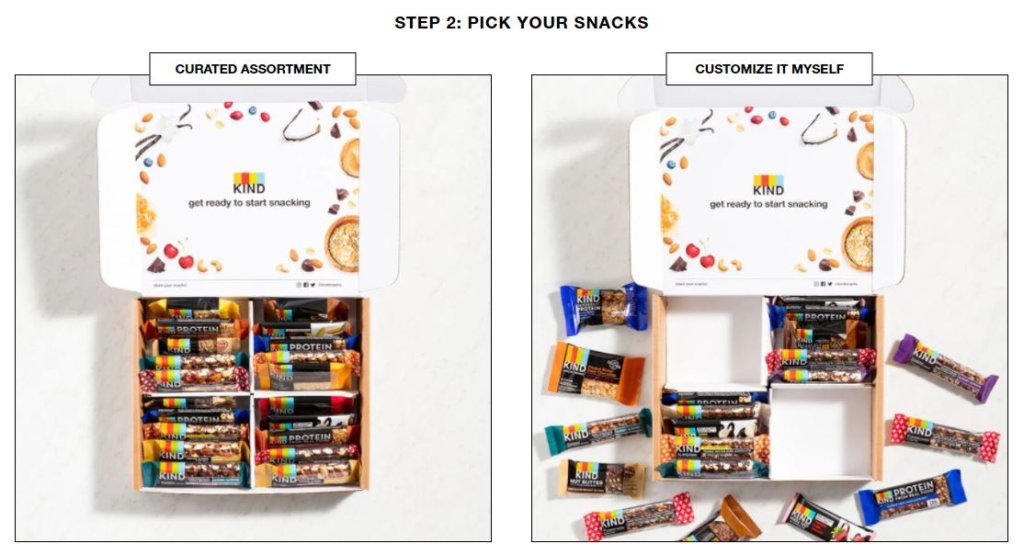
After perfecting their curation model, KIND noticed an increased ability to upsell and saw their average order value jump by 24%.
Communication is also critical. Always send an email notification prior to shipment, providing customers an opportunity to review and modify their orders. You also should ask for feedback, what did they like or not like about their previous order.
Membership
Membership subscriptions no longer apply just to gyms and country clubs. Whenever a business charges a recurring fee for access to their services, products, or a set of privileges, they have adopted a membership experience. Amazon Prime and Costco are leaders in this space.
Benefits
One of the key benefits of membership subscriptions is that there isn’t as much pressure to offer a steady stream of fresh products or services.
Sure, Costco adds new products all the time, but the value of a Costco membership doesn’t depend on new products alone. It depends more on sweetening the access to those products. For example, Executive Costco members, who pay twice as much per year as Gold Star members, get an annual 2% reward on select Costco purchases.
Memberships provide the flexibility to personalize offerings based on your customers’ needs. Say a gym owner notices that yoga studios keep popping up around town. The owner could start offering yoga classes as a way to get more members in the door and add a layer of value for existing customers. This will drive loyalty and increase customer lifetime value.
Challenges
It can be time-consuming to figure out whether the services and access you offer meet your customers’ needs. You may need to send the occasional customer survey as well as research competitors’ offerings.
Consider wellness brand GNC, which runs the myGNC PRO Access membership.
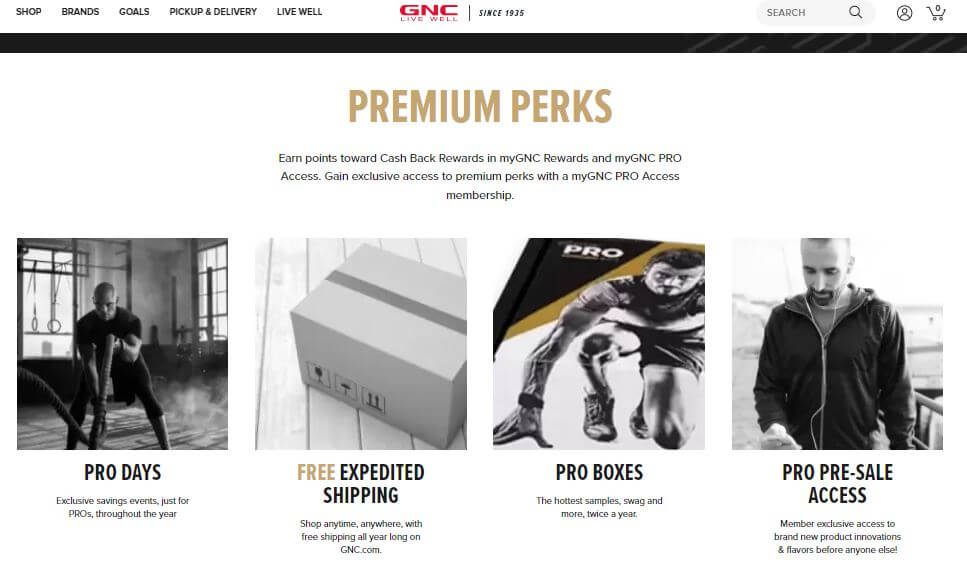
For $39.99 per year, subscribers receive deep discounts, expedited shipping, pre-sale access to products, and swag boxes that ship twice a year. GNC keeps members interested with an array of fresh products, giveaways, and preferred customer support.
How to succeed
Membership subscription models foster customer loyalty when they find new ways to make the member feel special.
For a while, it was enough to send a birthday card with a 10% product discount. These days, members expect more. Consider creating a set of perks based on membership longevity. In the case of GNC, they might reward five-year members with a bonus swag box or one-year members with a deeper discount if they renew for a second year.
eCommerce subscription business models build customer relationships
Subscribers are a special kind of customer. They trust you enough to let you charge them automatically for the value you provide. But how do you keep that trust? By listening to what they want and always working to improve their personalized experience.
To learn more about the benefits eCommerce subscription models offer, click here to read our next article, 5 Benefits of Subscription Services.